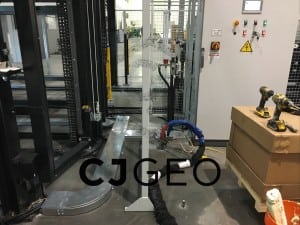Concrete Lifting Projects
-

9″ Floor Lift
THE JOB 9″ floor lift for 6,000 square feet of slab floor in a flex space building in Bosto...
-

Runway Slabjacking
THE JOB This runway slabjacking project is located in Norfolk, Virginia, at a military base. The ...
-

Warehouse Floor Lifting
THE JOB 25,000 square feet of the industrial floor at a military facility settled up to 4 inches ...
-

Blower Slab Stabilization
THE JOB During a routine inspection, extensive voids were discovered under the slab supporting a ...
-

Grain Bin Floor Repair
THE JOB The floor of a 105′ diameter grain bin settled. The floor had a bin sweep installed, that...
-

Alley Settlement Correction
THE JOB Dewatering associated with a basement excavation caused settlement of an adjacent alley’s...
-

Urban Grade Crossing
THE JOB 32 track feet of grade crossing panels settled. This caused the adjacent asphalt pavement...
-

Industrial Facility Floor Repair
THE JOB The slab floor inside of a manufacturing facility in Hagerstown, Maryland settled. This c...
-

Railway Grade Crossing Repair
THE JOB 112 track feet of crossing panels settled, and needed grade crossing repair. This caused ...
-

Florida Grade Crossing Repair
THE JOB Settlement and deflection of precast grade crossing were causing highway pavements to det...
-

Fire Station Floor Lifting
The Job This fire station floor lifting project is located about an hour east of Richmond, Virgin...
-

Dollar Store Floor Void Filling
The Job This floor void filling project is located about three hours west of Richmond, Virginia. ...
-

Bridge Approach Ground Improvement
The Job This bridge approach ground improvement project by CJGeo is located in Richmond, Virginia...
-

New Jersey polyurethane grouting
The Job This New Jersey polyurethane grouting project is located in Creskill, New Jersey. As part...
-

Maryland Concrete Lifting
The Job This Maryland concrete lifting project is located in Frederick, Maryland. The project is ...
-

Apartment Floor Lifting
The Job This apartment floor lifting project is on a military facility in Washington, DC. During ...
-

Virginia Polyurethane Grouting
The Job This Virginia polyurethane grouting project is located in Blacksburg, Virginia, at Virgin...
-

Bridge Approach Grouting
The Job This bridge approach grouting project is located near Lexington, Virginia. It is on Inter...
-

Michigan Polyurethane Grouting
The Job This Michigan polyurethane grouting project is located near Saginaw, Michigan. The work w...
-

Ohio Polyurethane Grouting
The Job This Ohio polyurethane grouting project by CJGeo was for a short line railroad near Scio,...
-

Fairfax Polyurethane Grouting
The Job This Fairfax polyurethane grouting project is located at a commercial building used for m...